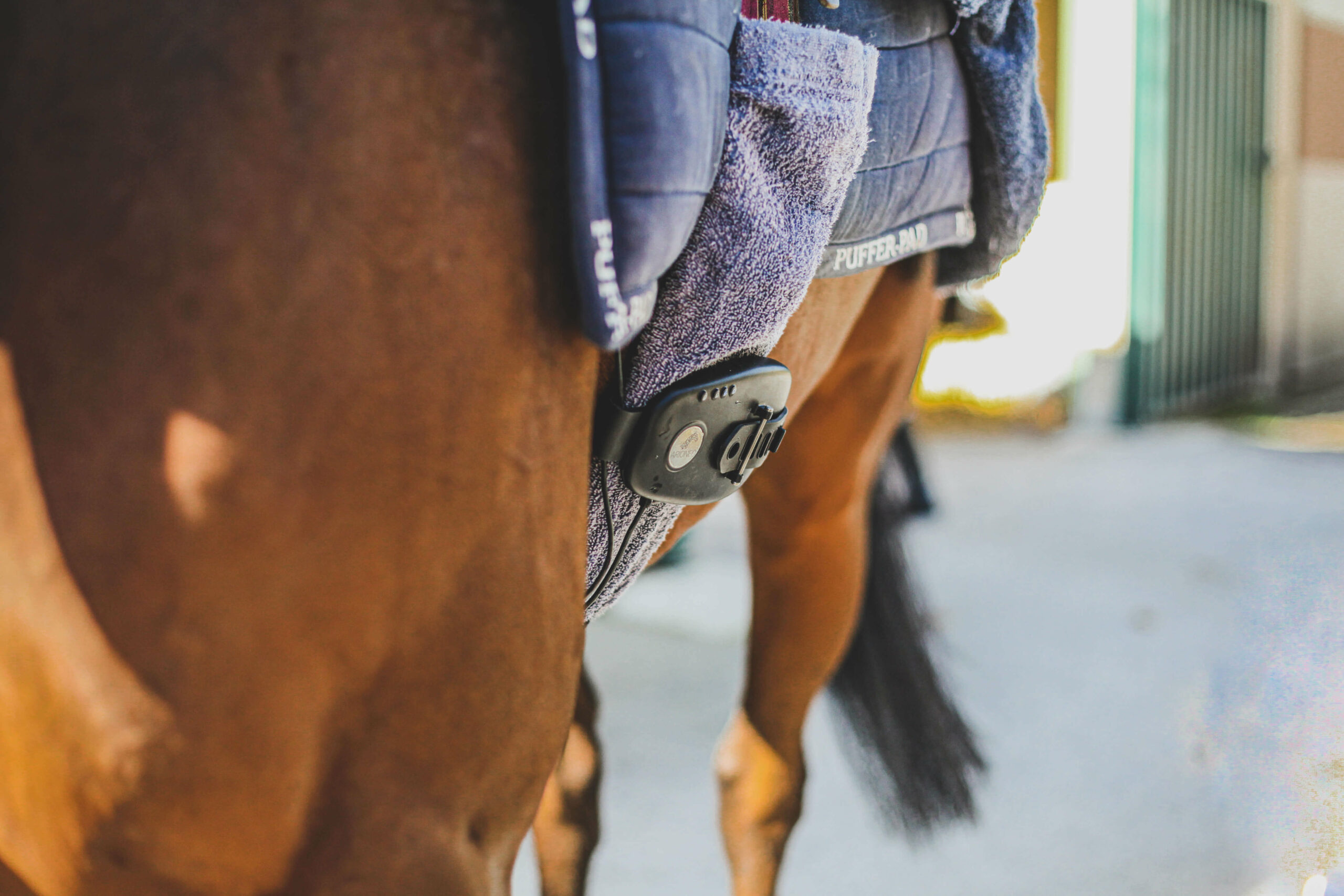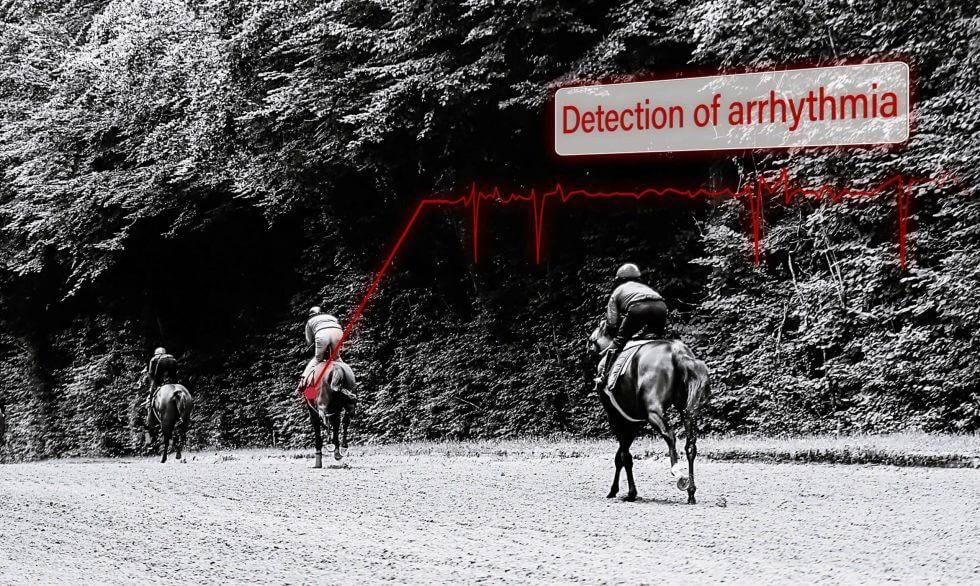Warning: number_format() expects parameter 1 to be float, string given in /var/www/wordpress/wp-includes/functions.php on line 425
Cardiac arrhythmias detection meets some major challenges in the racing industry: animal welfare, limitation of accidents in training and on the racetrack, analysis of underperformance and detection of hidden pathologies. Whether benign or pathological, these heart rate abnormalities must be investigated to ensure that they do not endanger the horse.
In this article, Dr Emmanuelle van Erck (DVM, PhD, ECEIM) explains when to suspect an anormal heart rhythm and how to identify it.
Dr. Emmanuelle Van Erck’s interview about cardiac arrhythmias in horses
Could you please introduce yourself?
Dr Emmanuelle van Erck, I am a veterinarian specialized in equine internal and sports medicine.
What is a cardiac arrhythmia?
Cardiac arrhythmias are changes in the rhythm of the horse’s heart. They can be abnormal or physiological. They are quite common in highly athletic horses and can become problematic when they disrupt blood circulation and subsequently reduce oxygen supply (through the blood) to the muscles.
How to detect arrhythmias?
There are several ways to detect arrhythmias. For example, you can take the horse’s pulse or use a stethoscope to auscultate the heart. However, this requires to have the horse standing at rest. It is also possible to record an electrocardiogram (ECG) and analyze the electrical activity of the heart during exercise. This ECG monitoring during physical activity becomes particularly interesting to monitor competitive horses.

Here is an ECG recorded with the Equimetre sensor during an effort.
The red arrows show the arrhythmias identified on this recording.
Following their identification and after an examination, the veterinarian of this racehorse was able to conclude that arrhythmias were pain-induced. Indeed, an old tendon injury had reappeared, but not enough to be expressed by a lameness and detected with the naked eye.
Are cardiac arrhythmias more common in racehorses?
Arrhythmias may be more common in racehorses because they train at higher intensities, which may cause disturbances in the heart rhythm. These arrhythmias are also found in equestrian sport horses. Horses who are not particularly active can also have these arrhythmias, but these are more often linked to an underlying cardiac pathology.
Why are arrhythmias potentially dangerous?
Arrhythmias can be dangerous because they can cause major disruptions in the distribution of blood in the vascular network. For example, if the supply of oxygen to the brain is suddenly reduced, the horse may feel dizzy and collapse. The supply can also disturb muscle function when the horse is at full speed, causing him to slow down during work and potentially underperform.
What is the difference between a physiological and a pathological arrhythmia?
Normal “physiological” arrhythmias are frequent in horses. These arrhythmias occur in horses who naturally have a very slow resting heartbeat. The heart occasionally skips a beat in this case. This usually happens when the horse is very relaxed and can be associated to his athleticity.
Pathological arrhythmias occur when disturbances in the heart rhythm randomly happen, and usually in connection with an underlying disease. Arrhythmias are always pathological when they happen too frequently during exertion. Pathological arrhythmias are abnormal arrhythmias that disrupt a horse’s capacity to exercise and to perform.
What is the role of Equimetre in the detection of arrhythmias?
Equimetre is the only connected sensor that currently allows the measurement of physiological parameters during exercise such as speed, stride frequency, heart rate, etc… as well as a full recording of the ECG. It is therefore possible to integrate in a single sensor a measurement of all parameters which are very important to evaluate the horse’s health. Equimetre supports the trainer and the veterinarian in taking decisions in the horse’s best interest: it allows to detect overtraining and health issues , allowing to prevent the horse from getting injured. The data collected helps to take decisions in relation to the cause of the arrhythmias.
The monitoring of racehorses is a way to investigate an abnormal heart rate during training. Thanks to the recording of the ECG, it is possible to detect arrhythmias during high intensity efforts and thus diagnose possible problems.
The role of EQUIMETRE in the detection of cardiac arrhythmias in horses
The EQUIMETRE sensor is a unique technology dedicated to monitor the health and performance of the athletic horse. Scientifically validated, Arioneo’s products are daily tools for trainers and veterinarians. For each training session, the sensor automatically and systematically records the horse’s electrocardiogram (ECG) even at full speed. Therefore, following the analysis of abnormal parameters during a training session, the trainer can ask the veterinarian to analyze the horse’s ECG. By taking action before a problem occurs, the risk of poor performance can be reduced.

Key words: arrhythmia, racehorse ECG , cardiac rythm, physiologic arythmia, pathologic arythmia, racehorse cardio, racehorse monitoring



